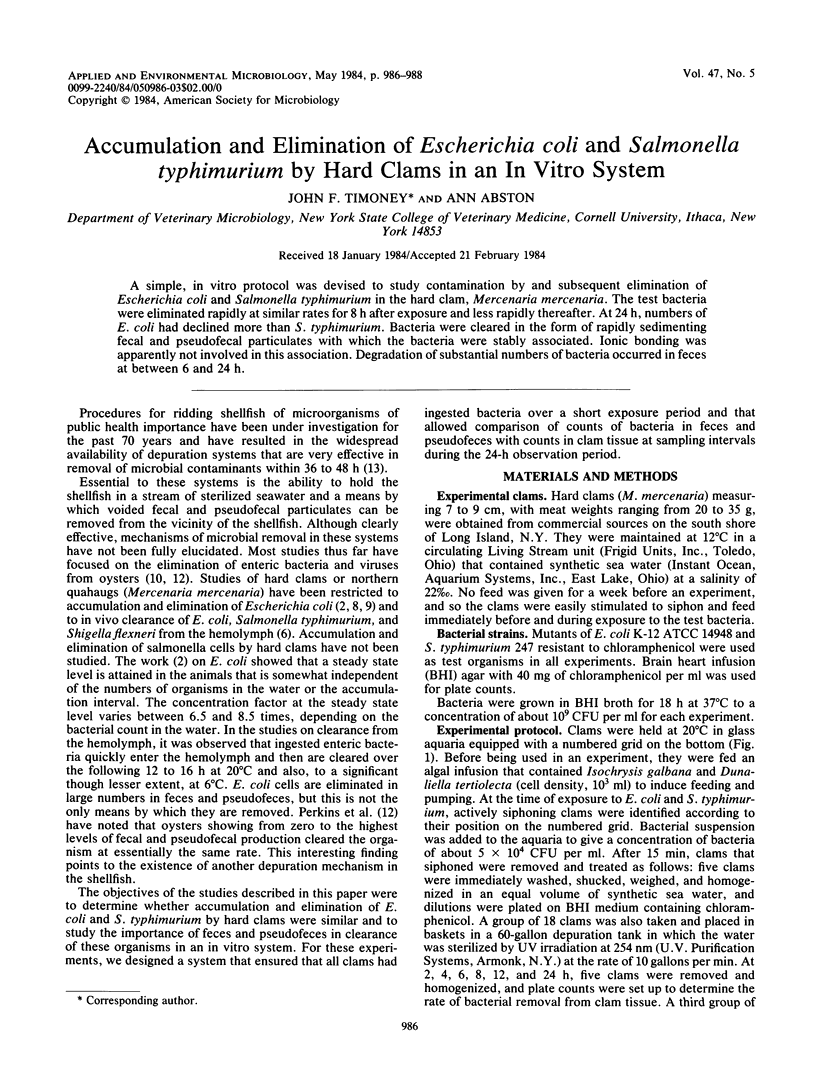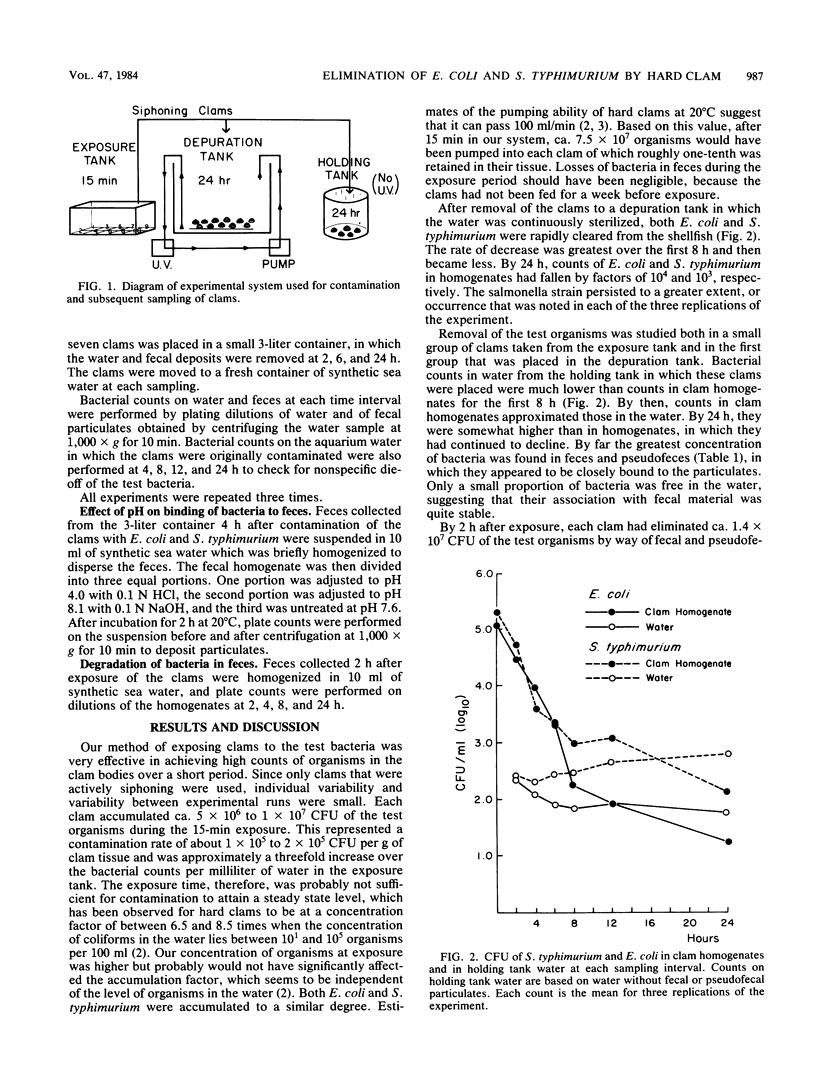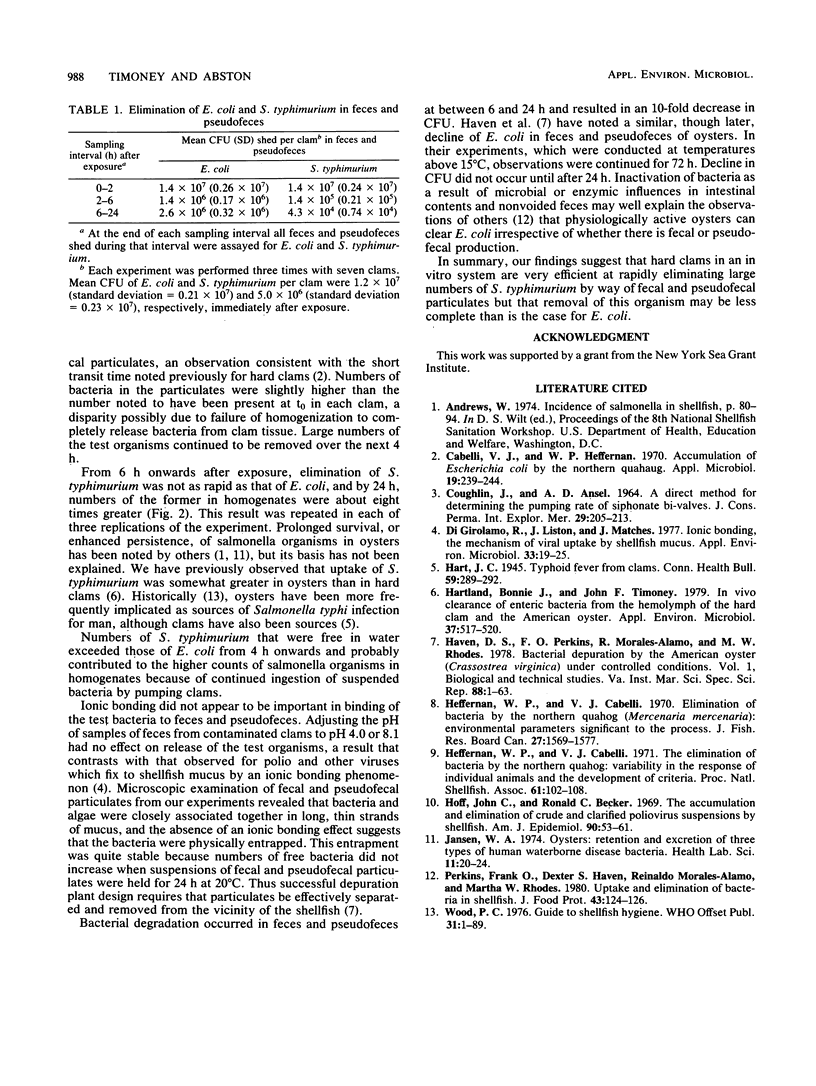Abstract
A simple, in vitro protocol was devised to study contamination by and subsequent elimination of Escherichia coli and Salmonella typhimurium in the hard clam, Mercenaria mercenaria. The test bacteria were eliminated rapidly at similar rates for 8 h after exposure and less rapidly thereafter. At 24 h, numbers of E. coli had declined more than S. typhimurium. Bacteria were cleared in the form of rapidly sedimenting fecal and pseudofecal particulates with which the bacteria were stably associated. Ionic bonding was apparently not involved in this association. Degradation of substantial numbers of bacteria occurred in feces at between 6 and 24 h.
Full text
PDF


Selected References
These references are in PubMed. This may not be the complete list of references from this article.
- Cabelli V. J., Heffernan W. P. Accumulation of Escherichia coli by the Northern quahaug. Appl Microbiol. 1970 Feb;19(2):239–244. doi: 10.1128/am.19.2.239-244.1970. [DOI] [PMC free article] [PubMed] [Google Scholar]
- Di Girolamo R., Liston J., Matches J. Ionic bonding, the mechanism of viral uptake by shellfish mucus. Appl Environ Microbiol. 1977 Jan;33(1):19–25. doi: 10.1128/aem.33.1.19-25.1977. [DOI] [PMC free article] [PubMed] [Google Scholar]
- Hartland B. J., Timoney J. F. Vivo clearance of enteric bacteria from the hemolymph of the hard clam and the American oyster. Appl Environ Microbiol. 1979 Mar;37(3):517–520. doi: 10.1128/aem.37.3.517-520.1979. [DOI] [PMC free article] [PubMed] [Google Scholar]
- Hoff J. C., Becker R. C. The accumulation and elimination of crude and clarified poliovirus suxpensions by shellfish. Am J Epidemiol. 1969 Jul;90(1):53–61. doi: 10.1093/oxfordjournals.aje.a121049. [DOI] [PubMed] [Google Scholar]
- Janssen W. A. Oysters: retention and excretion of three types of human waterborne disease bacteria. Health Lab Sci. 1974 Jan;11(1):20–24. [PubMed] [Google Scholar]


